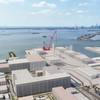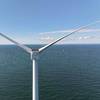How Serious a Problem is the Cost Issue in U.S. Offshore Wind?
Much has been written recently about the challenges facing U.S. offshore wind projects, resulting in requests to terminate or renegotiate contracts to sell power to states. Examples of these challenges can be found from Massachusetts to Virginia.
Coming on top of last week’s somewhat disappointing events of the Gulf of Mexico lease auction, speculation has mounted around the longer-term prospects for U.S. wind. But how serious is this problem, and what does it mean to the longer-term goals of the federal administration to deploy 30 GW of offshore wind by 203 and 110 GW by 2050?
Below, we discuss four Atlantic states and nine projects which have secured power sale commitments, all of which are passing through the federal permitting process. These are not the only states where projects face challenges, but they represent some of the biggest projects.
New York
Starting with New York, the state’s Public Service Commission is currently reviewing petitions seeking power sale terms for the Empire Wind 1 and 2, Beacon Wind 1, and Sunrise Wind projects, awarded in New York’s first two offshore wind solicitations.
In responding to the submissions, the New York State Energy Research and Development Authority (NYSERDA) addressed its comments to the commission, concluding that some degree of price adjustment is merited for five reasons:
- Market conditions (supply chain bottlenecks and inflation) are unprecedented, “outside of reasonable developer control,” and “were unforeseeable at the time of each bid.”
- If the projects are not built, New York’s renewable targets will be missed, with a consequential loss of health and economic benefits.
- High risk that replacement projects will cost more. NYSERDA states that, “bid prices from proposals received in NY3 are significantly higher than in prior solicitations”.
- Price adjusters are two-sided, protecting developers in the event of escalations and the rate payers if inflationary trends reverse.
- Inflation adjustment measures are included in the third offshore wind solicitation.
NYSERDA concludes that the average weighted increase of the Equinor-BP (EW 1, EW2, and BW 1) portfolio is 54%, and when combined with Ørsted’s Sunrise wind, the weighted average increase requested is 48%. NYSERDA calculates that, if the rates were adjusted to reflect the third offshore wind solicitation terms, which it plans to award shortly, the weighted average adjustment over the four projects would be 39%. The estimated levelized strike price adjustments sought by the project developers are shown below.
NEW YORK PROJECT PROPOSED PRICE ADJUSTMENTS
Costs $/MWh | Sunrise | EW1 | EW2 | BW1 | Total |
Original strike price | $110.37 | $118.38 | $107.50 | $118.00 | $113.40 |
Inflation | $28.17 | $37.28 | $51.27 | $55.37 | $43.24 |
Interconnection | $1.45 | $0.11 | $4.23 | $1.52 | $1.89 |
Annual escalation | $0.00 | $0.00 | $14.84 | $15.92 | $7.95 |
Term extension | - | $3.87 | - | - | $0.77 |
Adjusted strike price | $139.99 | $159.64 | $177.84 | $190.81 | $167.25 |
Increase | 27% | 35% | 65% | 62% | 48% |
Source: Intelatus Global Partners interpretation of NYSERDA data
The average impact for billpayers is estimated at 1.7-2.5%, depending on the scenario accepted.
New Jersey
A final investment decision for the Ørsted Ocean Winds 1 project has been linked to a technicality around securing the federal investment tax credits worth between 30% and 50%. Under existing New Jersey law, federal tax credits had to be returned to ratepayers. Ørsted had been negotiating with New Jersey for a full pass-back of Inflation Reduction Act (IRA) tax credits to the Ocean Wind 1 project. In early July, the New Jersey legislature narrowly approved a tax measure enabling the developer to retain federal investment tax credits. However, at the end of July, lawsuits we submitted by two resident groups and three electricity customers from Ocean City, challenging the support to Ocean Wind 1.
The CEO of Atlantic Shores Wind, a joint venture between Shell and EDF Renewables, is reported to have commented on the New Jersey bill supporting Ocean Wind 1, saying that, “Today’s bill passage reaffirms the State’s commitment to offshore wind. Yet, to establish a durable, thriving, full-scale offshore wind industry in New Jersey, we need an industry-wide solution, one that stabilizes all current projects, including Atlantic Shore Project 1, the largest offshore wind project in the State of New Jersey and third largest project awarded in the United States.”
The developer’s comment confirms that the risk to the project FID remains.
Massachusetts
The problems in Massachusetts concern two projects – Commonwealth Wind and SouthCoast Wind.
Due to “supply chain disruptions, historic levels of inflation, and rising interest rates,” Avangrid reported to Massachusetts officials that the project is no longer financially viable.
Avangrid’s proposed solution was to suspend the current PPA negotiations and re-bid the project in the 2023 solicitation. Three Massachusetts electric distribution companies, Eversource Energy, National Grid, and Unitil, agreed to terminate power purchase agreements for Avangrid’s Commonwealth Wind project. The agreement is subject to approval by the Massachusetts Department of Public Utilities. Avangrid will pay penalties of $48 million under the agreement.
SouthCoast Wind, a joint venture of Shell and Ocean Winds, is also discussing with Massachusetts utilities to terminate the existing power purchase agreements for half of the 2.4 GW offshore wind project and pay financial penalties for the termination. The developer cites “material and unforeseen supply chain and financing cost increases affecting the whole offshore wind industry.” As with Avangrid’s Commonwealth Wind, the developer seeks to rebid the project in the forthcoming Massachusetts 4 auction. It is understood that an agreement will be made for the project to pay penalties and continue with its plan.
The Massachusetts Department of Energy Resources along with the electric distribution companies, have recently issued a request for offshore wind capacity proposals. Bidders can offer from 200-2,400 MW and the electric companies will contract a maximum of 3.6 GW. The procurement process is expected to run for a year through to September 2024. We anticipate that Avangrid and SouthCoast Wind will resubmit their 1.2 GW Commonwealth Wind and 2.4 GW SouthCoast Wind projects in the solicitation.
Virginia
In addition to seeking approval from federal agencies, Dominion Energy has secured construction approval for the Coastal Virginia wind farm from the Virginia State Corporation Commission.
In August 2022, Dominion Energy received construction approval for the Coastal Virginia project from the State Corporation Commission.
However, the approval for the $9.8 billion project came with some conditions – based on Dominion’s proposal for the following cost-sharing approach for unforeseen project costs:
- On a 50/50 for any costs in the range of $10.3-11.3 billion.
- 100% Dominion for any costs in the range of $11.3-13.7 billion.
- Dominion accepts no funding of costs that exceed $13.7 billion. It is assumed that Dominion will cover 100% of the costs in the $9.8-$10.3 billion range.
Dominion reports that it intended to lock in around 90% of the project cost by the end of Q1-23 and complete construction of the 2.6 GW wind farm by 2026.
Dominion’s submission confirmed an estimated capital investment of $9.8 billion, which will include applicable federal tax credits. The budget is made up of $7.8 billion of offshore work + $1.5 billion of onshore work and $500 million reserved for contingencies and hedging. Dominion revised the projected project cost to $9.8 billion in its 2021 investor presentation, up from around $8 billion previously forecast. The CAPEX works out at $3,788 per kilowatt.
Short-term challenges but long-term foundations appear to be sound
The above review discussed projects accounting for 13 GW of offshore wind capacity where a short-term FID is in doubt and where local supply chain commitments will not materialize without a project FID. Each state and each project face different specific challenges. This is a significant downside.
If developer proposals are accepted, it does mean that the cost of projects will rise, and it does mean that ratepayers will inevitably pay more for offshore wind electricity than originally planned – which will undoubtedly lead to various objections. This is offset somewhat by the fact that electricity prices in 2023 in these states are already higher than when the projects were bid.
However, despite legal challenges to the process, states are discussing solutions to the challenges and finding ways to accommodate reasonable developer requests.
It does appear, at least for now, that these projects will all still be built…..just maybe a year or two later than originally planned and for a higher cost.












